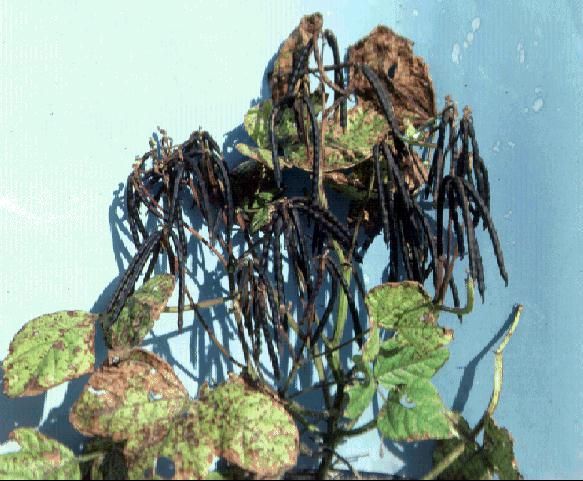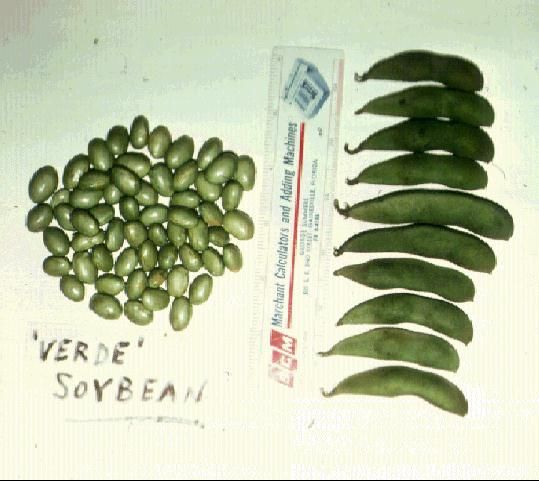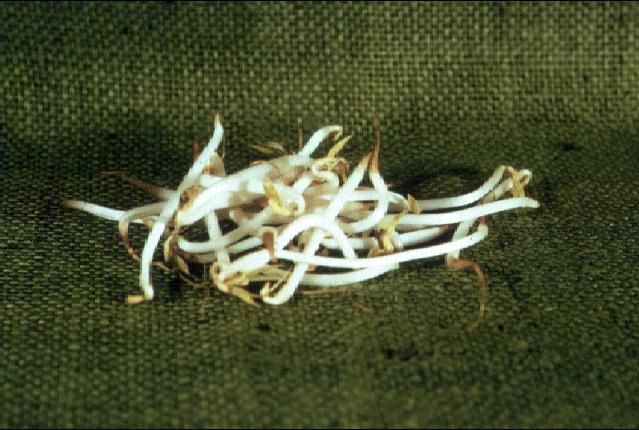Bean Sprouts—Phaseolus aureus R. and Glycine max (L.) Merr.1
While several kinds of legumes may be eaten as sprouts, the two most commonly eaten are the mung bean and the soybean. Mung is the most commonly used and preferred bean for sprouting.

Credit: James M. Stephens

Credit: James M. Stephens
Until recently, the use of mung bean sprouts in America was restricted to Chinese dishes. Lately, they have become increasingly popular in restaurant salad bars and US kitchens, particularly with health enthusiasts because sprouts are rich in vitamins and low in carbohydrates.

Credit: James M. Stephens
Making Sprouts at Home
Many methods have been used in sprouting mung beans. The beans are soaked in water for about 8 hours and then placed in tubs or crockery jars provided with adequate drainage and darkness. They are sprinkled with water at room temperature about three times a day. The sprouts are ready for use in about 4 to 6 days, depending on the room temperature.
Chinese masters of the art of sprouting modify the procedures somewhat, but the general principles of soaking and sprinkling are the same everywhere. For example, many cooks place a wet, absorbent towel over the top of the container and then soak the cloth two or three times a day. Experience is necessary to determine just when to soak the cloth for the best quality sprouts. To keep sprouts short and plump, some cooks place a bag of clean sand over the sprouts instead of the towels.
The simplest method for growing bean sprouts in your kitchen is to use the wide-mouth jar technique. A 1 quart (or larger) jar with lid is fine. Punch 8 to 10 holes in the lid so that it will drain easily and allow the heat of sprouting to escape. Measure 1/3 cup of mung beans for each quart of sprouts desired.
Wash the beans thoroughly, and sort out any discolored or defective beans. Place the beans in the jar, cover them with water, and let them soak overnight in a dark place. Sprouting in light allows a green color to develop, and most people prefer white sprouts. The next morning, drain off the water by turning the jar upside down. Shake the beans onto the side of the jar and place the jar with this side down in a dark cabinet. Each day rinse the beans and developing sprouts with water, pouring off the excess water each time. By the fourth day the sprouts should be at least 1 inch long and ready for using.
When the sprouts reach the desired stage of development, wash them in cold water to remove seed coats, fibrous roots, and other residue. The sprouts are best eaten soon after washing, but can be stored for several days in the refrigerator at 40°F–45°F.
Commercial Bean Sprouts
Methods for the commercial production of bean sprouts are quite varied, yet the principles are the same. According to a Michigan state bulletin by Beeskow, the beans are soaked at 70°F for 8 hours and then transferred to large uncovered metal tanks in quantity to produce a depth of about 12 inches of beans. A mechanical sprinkling device waters the sprouts by moving from one end of the tank to the other once every 4 hours.
Sprinkling holds the sprouts at a moderate temperature, washes out accumulated carbon dioxide and other wastes, and replenishes the oxygen supply. Under these conditions the sprouts emerge from the seed coat during the first day of sprouting. Growth is rapid and the sprouts reach the desired size in about 5 days. Sprouts 3½ inches long with a diameter of 1/8 inch are considered best.
Using Sprouts
Bean sprouts are used both raw and cooked. They are used in stews and soups, take the place of onions or mushrooms in fried or roasted dishes, or are eaten raw as a salad. Most commercially produced bean sprouts are canned.
The most palatable sprouts are those eaten fresh. The vitamin C content of mung bean sprouts ranges up to 0.346 mg per gram of fresh sprouts. Maximum vitamin C is reached during the second day of germination. However, at this stage the sprouts are quite small.


